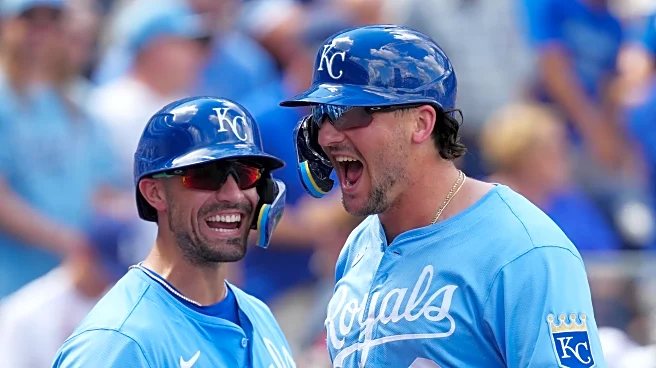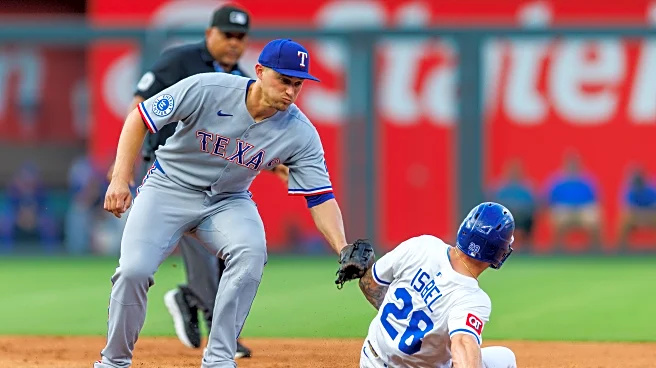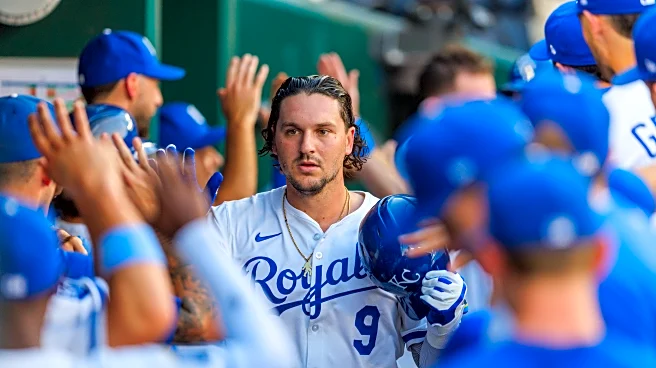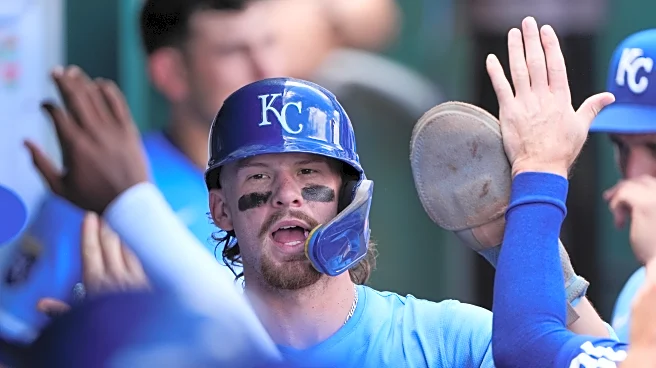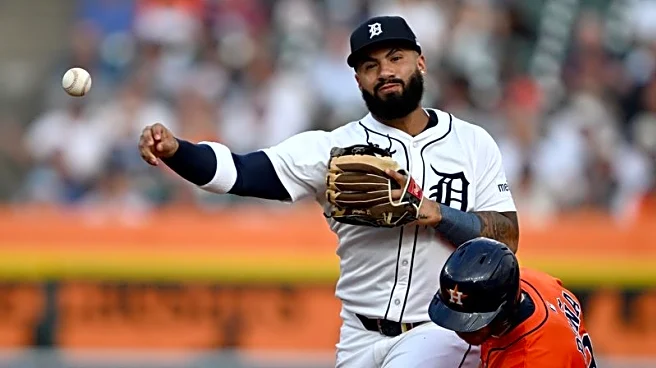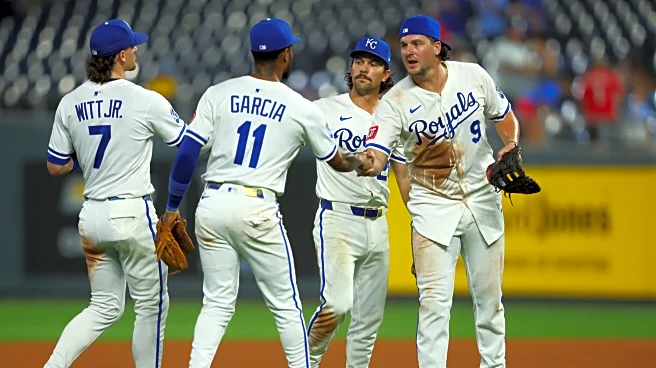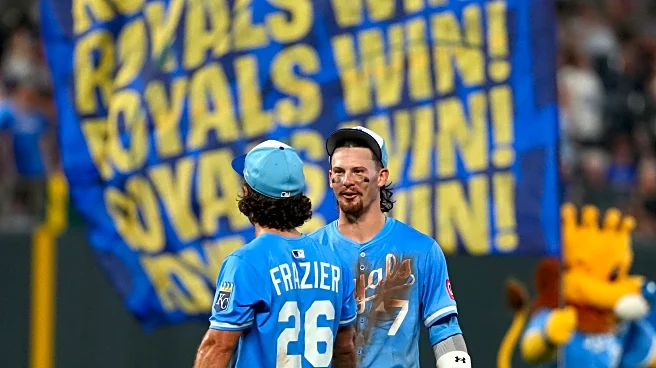
ICYMI, Jeff Passan wrote a long profile on Lucas Erceg and his struggles through the lens of a prison visit:
When COVID hit in 2020, Erceg spent his days pounding beers and playing Fortnite. Emma, whom he married in 2022 after they had met at Menlo six years earlier would arrive home, find 15 empty beer cans strewn about and “try to understand how it got to this point.” Deep down, she knew Erceg was drowning his unresolved childhood trauma in beer, which turned him mean. That June, Emma told Erceg she was leaving
their home in Phoenix and gave him an ultimatum: If he did not stop drinking in the next two weeks, she wouldn’t come back. He resolved then and there: no more alcohol. He could do this, through single-mindedness and grit, like he had so many other things.
“Looking back on it now … I was constantly putting myself in the worst position possible to have success but still able to find that success just so I can say, ‘Hey, I did that. I did that on my own,'” Erceg said. “I didn’t need any help. I didn’t ask for help. I didn’t want help. I was kind of flipping people the bird when they reached out their hand.”
The Royals shared a video about his story:
On a lighter note, Pete Grathoff talks to Erceg about his favorite dish at Garozzo’s:
“The way they cook their onions in the Vodka Rigatoni, they do it so well. They obviously cook it in vodka, right? So you get the immediate flame from pouring vodka into a hot pan. It almost burns the outside of the little diced up onion, but it leaves the onion itself on the inside nice and crunchy. So when you’re eating the Vodka Rigatoni, you get the rigatoni, the shredded tomatoes and all that, and the vodka sauce, obviously. But then you get a random little piece of onion, and it gives you that nice, crunchy texture that you’re kind of missing, right?
“Because, other than that, it’s just rigatoni and vodka sauce. And they do a really good job of cooking that rigatoni al dente, which is what I like. So it’s like a little under done, but the more it sits on the plate, and as you eat it, the noodles kind of soak up the sauce and get softer, but that crunch from the onion is wow. And then they make homemade Italian sausage and all that stuff. So you slice that up and take a bite of that, get some protein.”
Grathoff also checks in on the Royals’ playoff odds:
After losing to the Twins, the Royals’ postseason chances were at 6.1%, according to FanGraphs, while the Rangers were at 22.6%. Following the win Thursday, the Royals’ playoff odds are up to 26.7%, while the Rangers’ dropped to 7.8%… It also was the fourth time the Royals won eight times on a 10-game homestand. The others were in 1989, 1991 and 2015.
Per Robert Falkoff at MLB, with a home run in his 4th consecutive game, Vinnie Pasquantino is one short of the club record:
For Pasquantino, it was the fourth consecutive day in which he homered off Texas pitching. He is now one shy of tying the club record of five consecutive games with a homer, which was accomplished by Salvador Perez from Aug. 25-29, 2021, and Mike Sweeney from June 25-29, 2002.
I’m not complaining, but, uh, what’s going off with the offense?
Listicle?
Sam Dykstra and Jonathan Mayo at MLB Pipeline list “One potential prospect callup for each team”:
Royals: Carter Jensen, C (No. 2/MLB No. 70)
The Royals traded backup catcher Freddy Fermin to the Padres at the deadline and have used Luke Maile in that spot since. Meanwhile, Jensen continues to produce fireworks at Triple-A Omaha, where he has 11 homers, a .603 SLG and a .975 OPS in 35 games since his arrival in late June. The left-handed-hitting backstop has run a 107.6 mph 90th-percentile exit velocity, good for the 93rd percentile at Triple-A — signs that his power has been very real in games. With Jensen Rule 5-eligible in November, it could be worth Kansas City getting him some time to work with Salvador Perez late this season as the potential future of the catching spot.
Blog time?
Craig Brown’s latest article was about Wednesday’s loss:
This game had the familiar hallmarks of the early-season Royals that frustrated so often: An offense that shows early promise but then goes cold and pitching that holds it together just long enough but can’t ultimately overcome the lack of offense.
The Royals Reporter, Kevin O’Brien writes about Witt’s 100th career home run:
As pointed out by the Royals, Witt is the youngest player in Royals history with 100 career home runs. He also joins the elite company of 25-year-old players who reached the 100+ home run mark at that age. That list includes Alex Rodriguez, Cal Ripken Jr., Francisco Lindor, and Hanley Ramirez.
He also mentions his new gig at Just Baseball, where he wrote an article about Mike Yastrzemski leading off:
Even though he’s only hitting .229 this month, he’s been thriving in nearly every other category. His wRC+ is at 151, and he also sports a .964 OPS and .396 ISO since joining the Royals. He’s also shown excellent plate discipline this month, walking as much as he’s striking out (15.3%)…
What’s impressive about Yastrzemski’s line with the Royals is that he’s producing excellent offensive value in 16 games despite a subpar BABIP, which is .167. Conversely, his average exit velocity with the Royals is 92.7 mph, his barrel rate is 17.1%, and his hard-hit rate is 51.2%.
Blog Roundup:
- Royals Data Dugout ($): Pasquatch Power Surge – How Vinnie turned a slow 2025 start into the hottest two-month stretch of his MLB career
- Darin Watson at U.L.’s Toothpick: This Date In Royals History–1985 Edition – August 21
Another 2-1 game, but this one has a happy ending for the Royals
- Caleb Moody at Kings of Kauffman: Promising Royals pitching prospect humbled in first start at Triple-A
(MLB)
Previously, I’ve professed my love for good kaiju movies (and even gave notes on how to course correct the Legendary Films Monsterverse). As part of my birthday celebration this past week, I watched 3 recent(-ish) Godzilla movies
Godzilla x Kong: The New Empire (2024) – When last we left the Monsterverse, it was rudderless with too much focus on silly, generic humans. My review of Godzilla vs Kong stated “Dr. Andrews and Jia can stay – the rest need to be replaced by better scripts and actors/actresses. Surprisingly, that’s what happened. We kept Bernie (Brian Tyree Henry) for comic relief/plot device and added Trapper (Dan Stevens) as a love interest/plot device. But, the humans mostly stayed out of the way or did what they’re supposed to: humanize the actions of the kaiju. Hooray! The problem is now that the monsters are less interesting. A lot of the big-name monsters were wasted in the previous movies to the point where we had to pull Mothra out of the mothballs again. Scylla is back. Anyone remember him? No, didn’t think so. The antagonist giant spider/squid and Godzilla destroy Rome in a warm-up fight before Earth’s protector lizard settles in for a post-victory nap in the Colosseum. But this is a King Kong movie. Humanity’s ape champion is having a midlife crisis: he’s not the fighter he used to be and he’s looking for meaning. Me, too, big guy. Me, too. He explores Hollow Earth and discovers a new tribe of giant monkeys, including a baby Kong he begrudgingly adopts. But they are controlled by a brutal ape, Skar King, and the ice lizard he controls, Shimo. Predictably, Kong loses the first showdown*. There’s a cheesy prophecy to resurrect Mothra, but it’s wrapped around some good stuff with monster-attuned Jia having to decide between the Iwi tribe and her adopted mother (Dr. Andrews). Kong teams up with the revived Mothra and Godzilla, sidelined for much of the movie, and they win the day. It’s professionally done, but there’s just not much substance. Even though it’s only been a week, I could only remember vague outlines of the plot without Wikipedia. There’s already a sequel in the works for 2027, but I’m not sure where they are going with this franchise.
*Sidebar: My wife pointed out that we’ve seen versions of that one-on-one fight so many times in movies that we didn’t need any dialogue to get what’s going on. Again, it reminds me just how hard it is to make a good movie. It was a smart way to film a scene – you know you don’t need exposition or humans and the scene just works. Similarly, Godzilla/Scylla in Rome and Godzilla/Kong in Egypt were expertly done (the latter, hilariously influenced by the fight in They Live). And the humans were well done (mostly – Bernie could get annoying). But even with all those pieces in place, it’s still a mostly lackluster movie.
Shin Godzilla (2016) – Monster movies and, generally, science fiction movies, can be at their best when they’re not about the subject matter, but reflecting back on society. That’s what these next two movies do well, but in different ways. It’s interesting how Wiki says “Shin Godzilla received critical acclaim in Japan, while Western critics gave it a more mixed response”. I think there are three major reasons for that. First, there are a lot of Godzilla scenes that look bad. Sure, it’s the first Japanese Godzilla movie in more than a decade. But the first time he comes onto land, he looks laughably bad. Googly eyes? Really? Second, the dub wasn’t good, though some could argue that bad dubbing is part of the Godzilla experience. On subs vs dubs, I’m a firm believer in watching the dubs of movies, especially visual movies. They are not as linguistically accurate as good subtitles, but they can be done competently. Unfortunately, these were not. Thirdly, it doesn’t always feel like a monster movie. It’s more procedural and a political thriller (satire). I think that’s to its credit, not detriment.
The movie was directed by Hideaki Anno, of Evangelion fame, and there are some interesting directorial choices. I feel like it was thick with social commentary, but I missed some of it because I’m not of that culture. Much of the movie is spent in meetings, either with the Prime Minister or with the team of scientific misfits assembled by Deputy Chief Cabinet Secretary Rando Yaguchi to save the day. Despite taking place in 2016, some scenes look like the 1970s. But I think that is part of the satire. One of the characters says “Don’t knock red tape; It’s the foundation of democracy” and soon after, Godzilla runs amok in a city with insufficient government response due to the bureaucracy. Japan’s Self-Defense Forces are ineffective, so they have to rely on the Americans who make the situation worse by powering up Godzilla with their bombs. Yaguchi’s misfit team comes up with a novel scientific way to freeze Godzilla and he gives a rousing Independence Day-esque speech. However, they’re in a race against the clock as the UN has agreed to let the US nuke Tokyo to save the rest of the world. A Japanese-American diplomat and potential future President buys them enough time to subdue the monster. The whole film is wrapped around a nationalistic message about the Japanese working together, sometimes against their nature, to show the world that it controls its own destiny.
It’s not exactly what I was expecting when I sat down to watch it, but it’s a movie worthy of the Godzilla name and a quality retelling of the classic story with modern themes.
Godzilla Minus One (2023) – Walking into Godzilla Minus One and expecting a monster movie is like walking into First Blood (1982) and expecting a 90s action movie with Sly cheesily shooting up commies. At their core, both films are about PTSD and the effects of war on society. This one also features a giant lizard.
This movie is all about two humans: Koichi Shikishima (Ryunosuke Kamiki) and Noriko Oishi (Minami Hamabe). Shikishima is a pilot who pretends his plane is damaged the day of his kamikaze mission. On the repair island, Godzilla kills all the mechanics but one after Koichi freezes when he tries to shoot the monster. His disgrace follows him back to his ruined home. There, he runs into Oishi, who guilts him into letting her and her war orphan foundling, Akiko, stay with him.
Like the country around them, they start trying to rebuild after the war. Shikishima balances his survivor’s trauma with his dangerous job clearing mines and raising a child that isn’t his own with a woman who isn’t his wife. His surrogate family also includes his boatmates: the “kid”, the “doc”, and the cynical captain. He opens up to Oishi and begins to dream of living again. But then Godzilla attacks and, this time, threatens all of Japan.
Much like Shin Godzilla, I’m sure I’m missing some of the core themes. Both are nationalistic, Japan dealing with the shadow of World War II. I’m also not sure if it’s a semi-accurate portrayal of the Showa period or one that’s convenient for the movie’s messages. However, as a period piece, it will probably age better than some contemporaries.
The special effects were good enough that they have their own “controversies” section on Wiki. It was the first Godzilla movie to be nominated for an Oscar, and the first non-English language film to win the Best Visual Effects Oscar. Some of that is helped by being a period piece. But the monster effects are Jurassic Park-esque and blend in seamlessly with the sets in most scenes.
The movie is not without flaws. It wraps up too neatly, being both a smidge predictable and contrived. It’s a little slow in the middle. It even has a scene with laughable disaster physics to keep the main character alive, ala Roland Emmerich. Thematically, Shikishima’s “unfinished war” gets hammered home too much in the third act. But I agree with it being hailed as one of the best Godzilla movies of all time. I think this one is going to stick with me for a while.
Other notable bits that didn’t make it into the reviews:
- I find it interesting how the way to kill Godzilla varies and each is a reflection of the time period portrayed in the movie.
- We don’t get origin stories in either of these. The audience has already seen it so many variations that it’s not worth doing again. In both, it’s hinted that it was a monster strengthened by nuclear activity but the “how” doesn’t matter for the narrative.
For Song of the Day, how about a montage of Godzilla themes throughout history?
